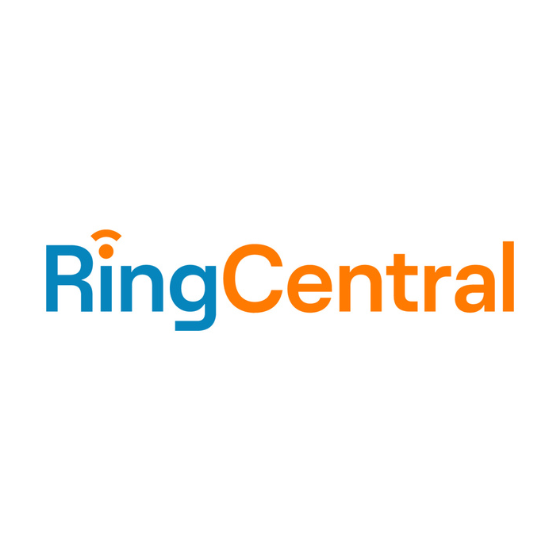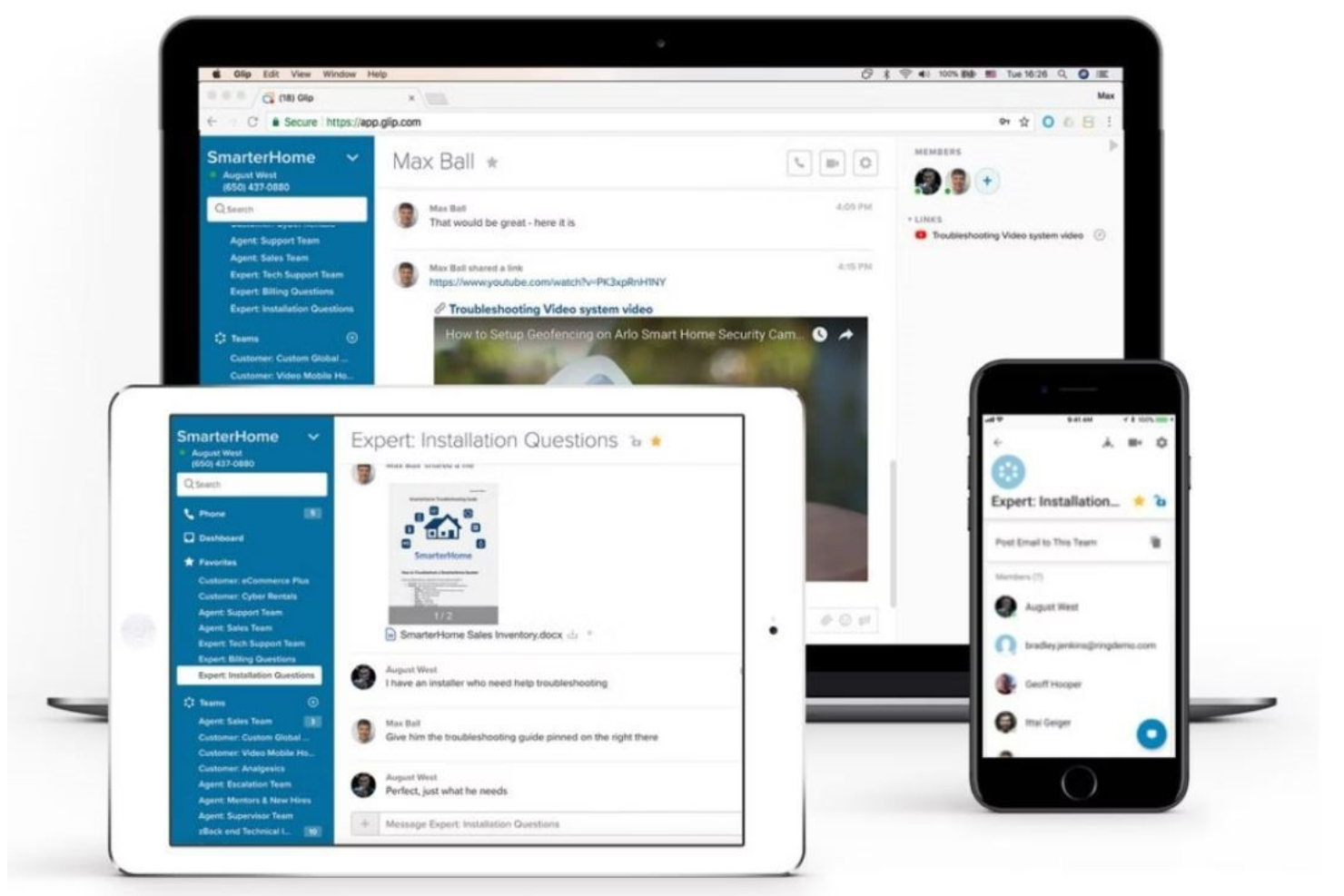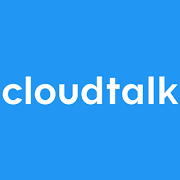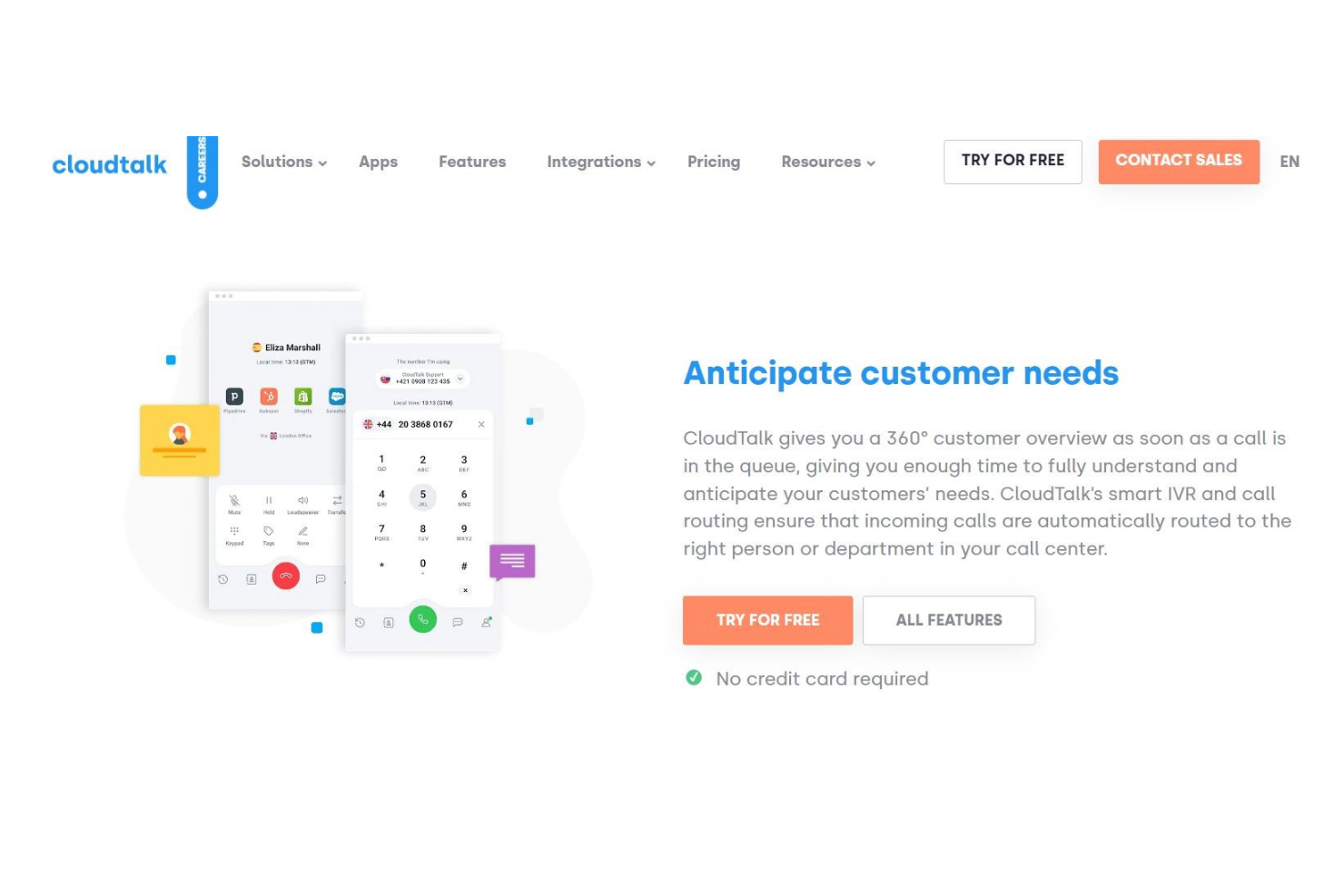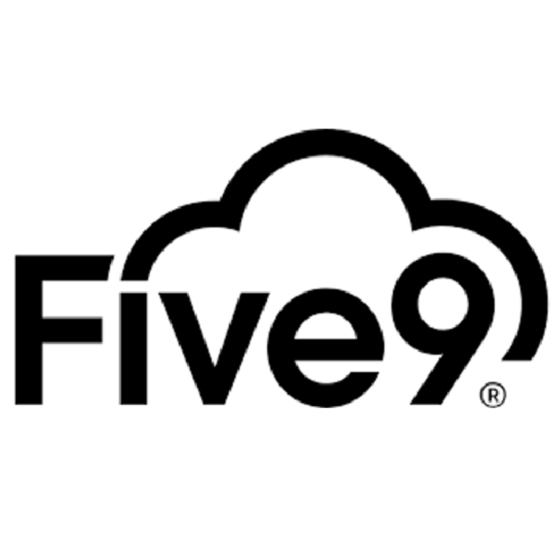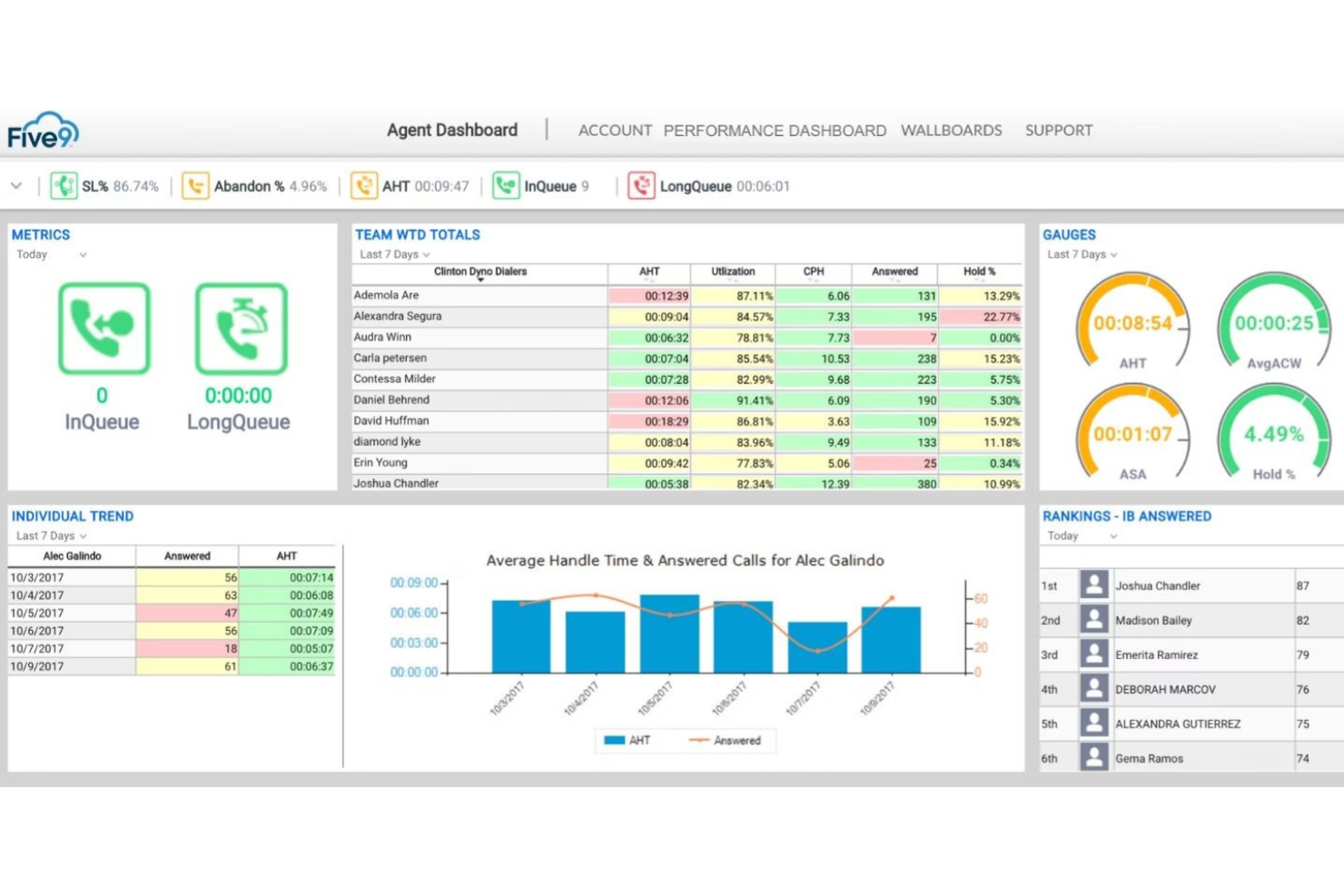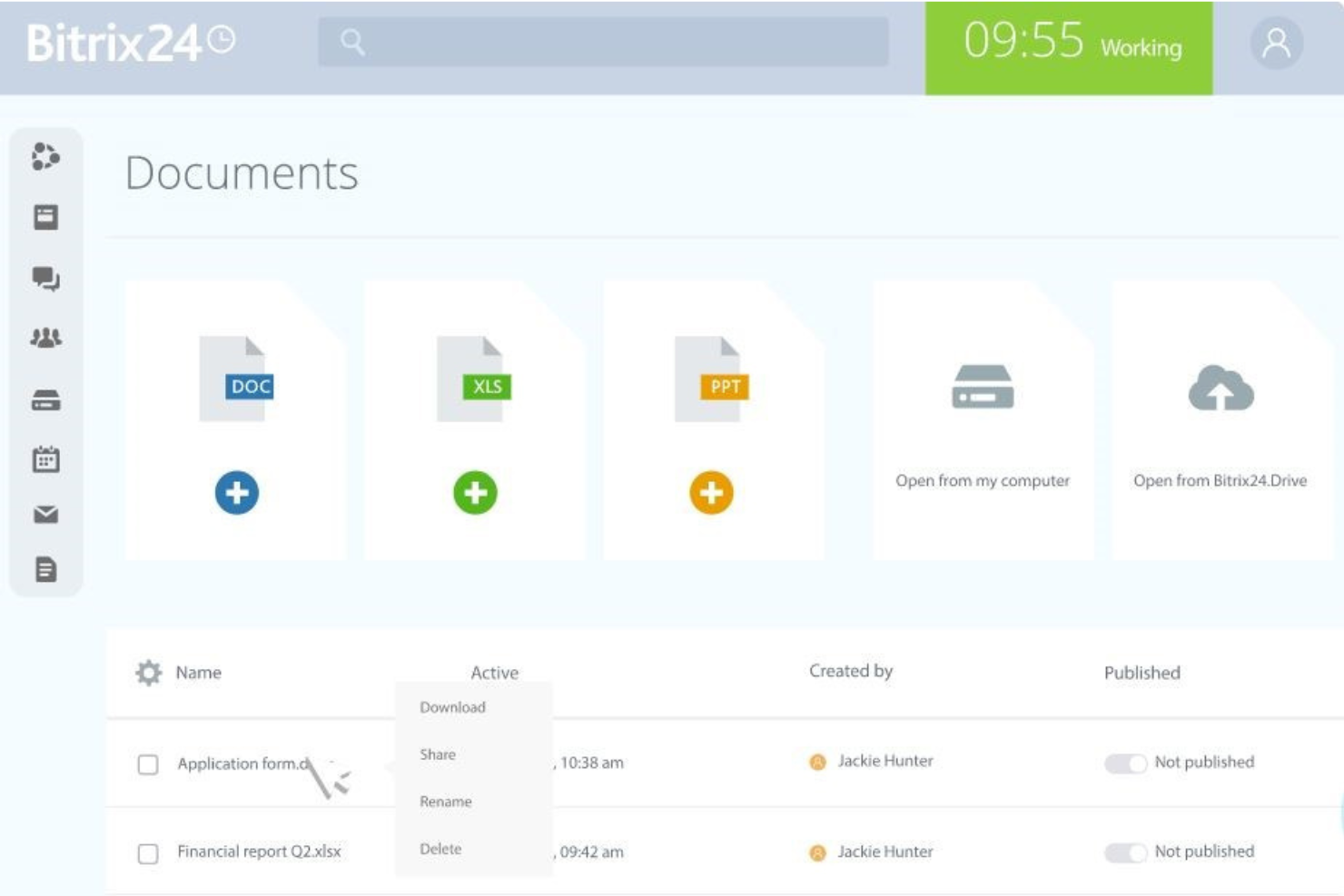10 Best Call Center Workforce Management Software Shortlist
Here's my pick of the 10 best software from the 20 tools reviewed.
With so many different call center workforce management software solutions available, figuring out which is the best fit for your business is time-consuming. You know you want software to help you optimize your staff scheduling to ensure you have the right number of agents available at peak times, but you need to figure out which software is best. In this article, I'll share my insights on the best call center workforce management software to help you avoid over- or understaffing based on your customer needs so you can continue to provide top-quality customer service.
What is Call Center Workforce Management Software?
Call center workforce management software is a tool used by call center managers to schedule agents for work and track their work hours efficiently. It is designed to forecast your staffing needs based on your historical call volumes so you can align your staffing levels to your predicted demand. This type of software also has numerous human resource management functions, such as the ability to track employee work hours and monitor individual agent performance and productivity.
Call center workforce management software offers numerous benefits to customer-facing businesses, including enhanced efficiency, and reduced under- or over-staffing, leading to less idle time and lower operational (hourly wage) costs. This type of software also helps organizations provide a better customer experience by reducing wait times when staff are appropriately matched to expected call volumes. Lastly, the transparency of these scheduling solutions also provides a better employee experience for your call center agents, improving your workplace morale.
Overviews of the 10 Best Call Center Workforce Management Software
Here’s a brief description of each call center workforce management software that showcases the tool’s best use case, their noteworthy features, and some pros and cons. I’ve also included screenshots to give you a snapshot of their user interface too.
RingCentral Contact Center is primarily call center software with some additional features that can solve other pain points in an organization. With the premium Contact Center plan, businesses get inbound and outbound call management, ACD and IVR, omnichannel capabilities, WEM (workforce engagement management), AI, and UCaaS.
The workforce engagement management solution is not the primary purpose of RingCentral Contact Center, but it exists as a way to ensure higher employee efficiency and productivity. This feature is based on gamification, allowing agents to complete challenges, earn points, and win prizes set by management.
RingCentral Contact Center offers solutions for startups, small businesses, and enterprise organizations, as well as targeting specific industries. They have experience creating custom plans for nonprofits, construction and real estate, financial services, healthcare, and education.
RingCentral Contact Center Standout Features and Integrations
Features include ACD with skills-based routing, advanced IVR with visual flow designer, over 90 real-time and historical reports, quality management, and workforce management.
Integrations include Appy Pie, Box, DropBox Business, Freshdesk, LiveAgent, Microsoft 365, Microsoft Excel, Zendesk Suite, Zoho CRM, and 300 more integrations.
Pros and cons
Pros:
- Powerful customer service platform
- Workforce engagement tools
- Can connect with any device
Cons:
- Workforce management is not the priority
Salesforce Service Cloud is a customer service application that equips businesses with tools for managing customer support interactions across various channels.
Salesforce Service Cloud provides a suite of tools that enable efficient handling of customer interactions and support cases. It offers features such as workforce engagement, which helps in forecasting demand, scheduling work, and optimizing resource allocation to meet service goals. The platform's omnichannel capabilities also allow agents to manage cases from various communication channels, ensuring that the workforce can respond to customer needs effectively.
Additionally, Salesforce Service Cloud includes performance analytics to monitor and analyze agent productivity and customer service metrics, aiding in the management of the call center workforce. These features are designed to help call centers maintain high levels of customer service while managing their staff's workload and performance.
Salesforce Service Cloud Standout Features and Integrations
Features include a knowledge base, real-time chat support through the Live Agent feature, case automation, mobile support, and a service console that provides a unified view of customer information, cases, and relevant data.
Integrations include Trello, Guru, Mailchimp, HubSpot CRM, Salesforce Sales Cloud, Twilio, Webex Experience Management, Smartsheet, Amazon Connect, and Freshdesk.
Pros and cons
Pros:
- Provides unified information storage
- Offers good customer support services
- Easy-to-use interface
Cons:
- Limited customization options
- Steep learning curve for new users
Best for integrated call center and customer service solutions
As a user-centered phone system that offers more than 70 advanced calling features, CloudTalk delivers workforce management that’s centered around customer service tools to help providers empower their agents. Some of their top clients include Mercedes-Benz, Fujitsu, Yves Rocher, Electronic Star, and DHL.
Some of the tools that could help agents perform better include international numbers and languages for more than 140 countries around the world. CloudTalk aims to improve every customer interaction with help from voice features, intelligent call routing, and statistics and monitoring.
This management software offers a VoIP suite that’s mostly used by sales teams and customer support teams across a number of verticals. They offer solutions for startups, SMEs, and enterprise organizations for tech, SaaS, fintech, trading, biotech, life sciences, and booking platforms.
CloudTalk Standout Features and Integrations
Features include omnichannel customer support with SMS and calling, call and agent monitoring, and advanced analytics with unlimited history.
Integrations include Front, MS Dynamics, Dataddo, Active Campaign, Freshservice, Salesloft, Outreach, and Zoho Desk.
Pros and cons
Pros:
- Granular agent performance details
- User-friendly interface
- Customer-focused tools
Cons:
- Not all phone numbers generated are valid
- Dashboard needs better visibility
This workforce management platform strives to deliver more efficiency and better teamwork through automated forecasting and scheduling, personalized agent coaching, and adherence monitoring.
According to Gartner research, Talkdesk workforce management tools can increase productivity by 19%, decrease attrition by 25%, and improve customer satisfaction by 11%. In addition to proven tools like analytics and insight, they keep innovating with new features to keep up with the modern world, like GPT-4.
Talkdesk offers work management solutions for business process outsourcers, small and medium businesses, and enterprise-level organizations. Companies can search for tools by role, solution type, and business size to create a custom plan that best suits their needs. They also offer custom solutions for financial, retail, and healthcare services.
Talkdesk Standout Features and Integrations
Features include intelligent forecasts, automated scheduling, analytics and insights, omnichannel support, mobile app, and agent request chatbot. The mobile app comes with 24-hour access and support.
Integrations include Freshdesk, Google Contacts, LiveChat, Nimble, Rippling, Salesforce Sales Cloud, Slack, Shopify, Zendesk, and Zoho CRM.
Pros and cons
Pros:
- Straightforward, simple UI
- Easy to track users
- Customizable metrics on dashboard
Cons:
- Occasional bugs
- Delays in ticket generation
Ameyo is a leading customer service experience and contact center provider that has the tools businesses need to manage their agents and improve customer interactions. Many companies choose Ameyo for their customer support needs, some of which have experienced a 60% increase in productivity.
When integrated with a workforce management system, Ameyo enables organizations to address customer needs through improved training, comprehensive agent monitoring, and deep call tracking. The map conversation journey is an especially useful tool, as it can preserve the context of the conversation and help agents better understand customers.
Ameyo offers flexible plans to support startups, SMBs, and enterprise organizations across a number of industries, including banking, BPO, education technology, insurance, healthcare, and ecommerce.
Ameyo Standout Features and Integrations
Features include enterprise contact center, cloud contact center, remote call center, video contact center, mobile contact center, Truecaller verified ID, and Google My Business Messages.
Integrations include Google My Business, FieldEZ, Freshdesk, Knowmax, LeadSquared, Salesforce, Sugar CRM, WhatsApp, Zendesk, and Zoho CRM.
Pros and cons
Pros:
- Straightforward, user-friendly tools
- No training needed
- Control over agent breaks, campaigns, and activities
Cons:
- Report generation is complex
- Call recordings are deleted after 30 days
Five9
Best automated, intelligence-driven workforce management solution
Five9 is a cloud-based contact center and performance management solution that helps with scheduling, adherence, intraday updates, and forecasting. With real-time data, this WFM software applies automated tools that smooth over bumps in the road.
This platform offers more flexibility to agents and representatives with automated scheduling that takes shift bidding and skills-based requirements into account. Once agents are part of the workflow, managers can track their work in real-time to ensure they’re staying focused and empower them with added support as needed.
Five9 provides options for healthcare, financial services, retail, higher education, and customer service needs with plans for enterprise, mid-market, and small businesses. You can also search solutions by role to find the right tools for agents, supervisors, or overall business strategy.
Five9 Standout Features and Integrations
Features include multiskill and multichannel forecasting, automated preference scheduling, multiple change notification channels, mobile app, and agent portal. The agent portal comes with shift bidding, schedule change and time off requests, notifications, and alerts.
Integrations include AgencyBlock, CallSource, Dynamics 365, ExecVision, Freshdesk, Gong.io, Grow, Shelf, Velocify, and Zendesk.
Pros and cons
Pros:
- Real-time manager guidance capabilities
- Straightforward to learn and use
- Very user friendly functionality
Cons:
- Some reports have long load times
- Complex reporting requires an integration
In addition to CRM, project management, and collaboration tools, Bitrix24 also offers HR tools and workforce management automation for remote and in-office teams. Bitrix24 has a resume that includes over 12,000,000 organizations that use their tools for productivity, communication, mobility, management, and leadership.
Part of what makes Bitrix24 such an attractive option for many users is that it replaces all current SaaS tools and offers simple migration of data that comes from other systems. This employee scheduling platform also offers a social-style environment, which allows agents to create profiles, like and comment, share content, and message one another.
Bitrix24 offers solutions for various industries of all sizes, including solo operations, small businesses, and enterprise-grade organizations. They have experience in several industries, including legal, retail, travel, restaurant, remote work, storage, and transportation.
Bitrix24 Standout Features and Integrations
Features include work time and tracking reports, clocking in and clocking out, HR automations, and actionable insights and analytics. HR automations include robotic process automation (RPA), automation for routine workflows, and smart process automations (SPA).
Integrations Dropbox, Instagram, Mailchimp, Miro, RingCentral, Stripe, WhatsApp, Xero, Zapier, and Zoom.
Pros and cons
Pros:
- Complete online communication from anywhere
- Simple automations and customization
- Most features are available for free
Cons:
- Premium price point
- Switching plans can result in locked data
Formerly Aspect Workforce Management, Alvaria Workforce is a workforce optimization solution and contact center software that offers premium staffing services that can help with staffing during shortages. It offers forecasting, planning, agent scheduling, employee self-service, and real-time agent tracking to ensure productivity, efficiency, and good customer interactions.
In addition to its core scheduling capabilities, Alvaria Workforce also provides access to Alvaria Workforce Reserve that can help organizations with a multi-floor contact center make better use of their space post-Covid 19. Key differentiators include automatically assigning empty seats, streamlining seat assignment changes, and increasing visibility of seat management.
Alvaria Workforce is designed for anticipating customer needs in a variety of industries, including banking and finance, insurance, healthcare, airline, retail, utilities, manufacturing, and telecommunications.
Alvaria Workforce Standout Features and Integrations
Features include multi channel scheduling, facilities planning, real-time adherence monitoring, multi-session capabilities, performance optimization, and scheduling assistance. Alvaria offers an enhancement package for those that outsource some of their contact workload.
Integrations include direct integrations with Bright Pattern and Twilio Flex, as well as Jitterbit Harmony for integrations between Apttus, Netsuite, and Salesforce.
Pros and cons
Pros:
- Granular management control
- Intuitive exploration of features
- Fast operating speed
Cons:
- Steep learning curve
- Training support is a separate subscription
Best for versatile workforces with mobile, remote, and hybrid management capabilities
PanTerra Networks offers a combined business communication solution that focuses on collaboration. With file sync and sharing, as well as team messaging, managers and agents can get in touch wherever work takes them.
One of the features that makes PanTerra Networks stand out is their function-oriented solutions. Businesses can choose between distributed workforce environments, mobile workforce configurations, and virtual call center software setups to get tools designed specifically for their day-to-day operations.
PanTerra is designed for medium and large businesses who want to ensure open communication across all departments and levels. Custom seat pricing is available for those with large scale deployments. In addition to solutions for franchise and legal organizations, PanTerra Networks also offers HIPAA secure features that are ideal for healthcare.
PanTerra Networks Standout Features and Integrations
Features include secure cloud storage and communications, team messaging, video conferencing, business analytics, and file sharing and syncing.
Integrations include Google Workspace, HubSpot CRM, Microsoft 365, Microsoft Outlook, Salesforce Essentials, and Zendesk Suite. PanTerra also works with Streams AppDesigner for creating open APIs to connect with CRMs and other third-party apps.
Pros and cons
Pros:
- Works with all devices
- Remote work capabilities
- Dashboard for instant insights
Cons:
- Multi-language pronunciation is imperfect
- Cumbersome comments feature
The Genesys Cloud CX WFM solution strives to elevate the agent experience to ensure higher employee engagement and better customer support vs. customer service. Companies that have used Genesys Cloud CX to improve company culture saw a 70% reduction in time processing requests and a 45% increase in employee satisfaction.
One of the tools Genesys Cloud CX offers for staff engagement is gamification, where employees can access scorecards, leaderboards, and dashboards that are focused on improving visibility and participation in KPIs. And with a personalized development hub, agents are empowered with the tools they need to improve.
Genesys Cloud CX offers solutions for SMBs, mid-level organizations, and enterprise-grade companies. They also focus on targeting business needs with solutions that address a variety of industries, including banking, government, healthcare, retail, and insurance.
Genesys Cloud CX Standout Features and Integrations
Features include employee performance management, workforce forecasting and scheduling, quality assurance and monitoring, speech and text analysis, long-term workforce planning, and employee engagement tools through gamification.
Integrations include AgenTrak, Azure Active Directory, Boost.AI, Google Workspace, Gong.io, Infobip, Stella Connect, UserVoice, Zluri, and Zendesk Suite.
Pros and cons
Pros:
- Onboarding process is simple
- Web-based management
- Constantly improving features
Cons:
- Slight latency in real-time displays
- Chat is not PCI compliant
The Best Call Center Workforce Management Software: Pricing Comparison Chart
This comparison chart summarizes basic details about each of my top call center workforce management software selections. You can view pricing details and the availability of free trials or demos side-by-side to help you find the best software for your budget and business needs.
| Tools | Price | |
|---|---|---|
| RingCentral Contact Center | From $24.99/user/month | Website |
| Salesforce Service Cloud | From $25/user/month (billed annually) | Website |
| CloudTalk | From $25/user/month (billed annually) | Website |
| Talkdesk | From $75/user/month | Website |
| Ameyo | Pricing upon request | Website |
| Five9 | From $149/month; Custom plans are also available | Website |
| Bitrix24 | From $49/month (5 users) | Website |
| Alvaria Workforce | Pricing upon request | Website |
| PanTerra Networks | From $24.95/month | Website |
| Genesys Cloud CX | From $75/user/month | Website |
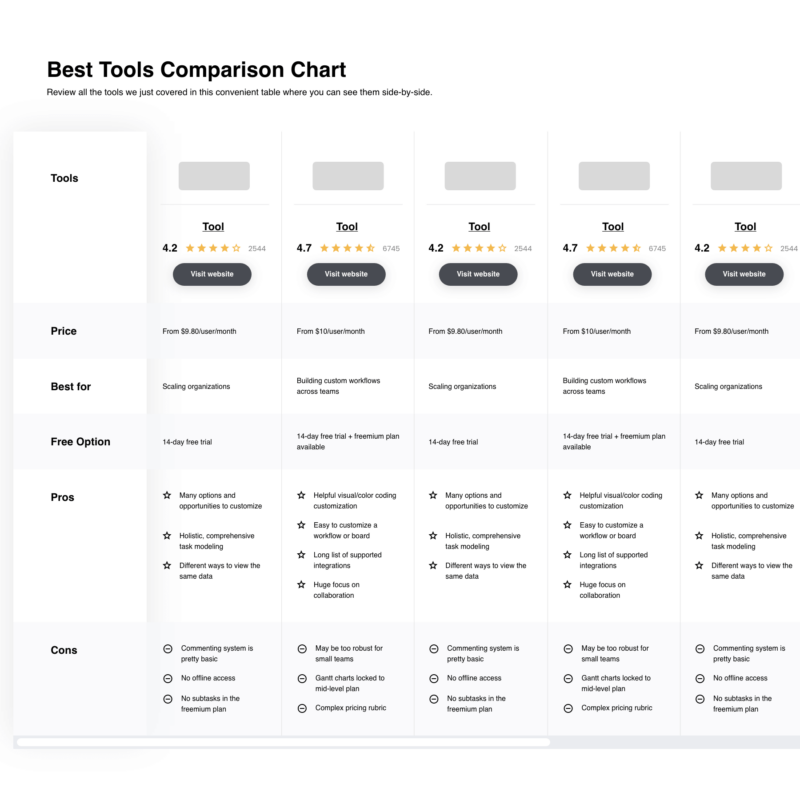
Compare Software Specs Side by Side
Use our comparison chart to review and evaluate software specs side-by-side.
Compare SoftwareOther Options
Here are a few more worthwhile options that didn’t make the best call center workforce management software list:
- ZIWO
Best for integrating with all your essential third-party tools
- Cisco Unified Contact Center Express
Best for workforce optimization
- Nextiva Call Center
Best for all-in-one call center support
- LiveAgent
Best for call center and help desk in one
- Call Center Studio
Best — and only — Google-based contact center software
- Sharpen
Best agent-centric approach to staffing with simplified queue interactions
- Playvox
Best for engaging your agents through motivation tools and incentives
- Avaya Experience Platform
Best for managing interactions from multiple channels
- MaxContact
Best cloud-based call center solution for large teams
- Sales Sling
Best lead-focused call center workforce management software
Selection Criteria for Call Center Workforce Management Software
As you read through my software summaries, you might be wondering how I actually chose what to include on this list. I started building this guide by first evaluating recent call center workforce management software market data to get a sense of the biggest players in this software space. I then compared them to see how they stacked up against one another.
Finally, I honed this list down to just the top 20 by using the selection criteria below. Drawing on my years of CX experience, I was able to pinpoint the features that added the most value to ensure I only included those products that balanced price and usefulness the best.
To satisfy your curiosity even further, below are the essential features and other assessment criteria I used to develop this list:
Essential Features for Call Center Workforce Management Software
While many of the best call center software options offer an all-in-one solution for team management and call management, these are not the same. I chose software that placed an emphasis on workforce management as opposed to distributing inbound calls, collecting customer data, or managing outbound calls.
Here's my list of the core features that are essential for call center WFM software:
- Automated tracking: Keeping an eye on how much time your team spends on calls, chats, and tickets means less paperwork and manual data input.
- Approval capabilities: Review all shift trades, time off requests, and callouts through your software to streamline management tasks.
- Work-from-home reporting: With so many companies transitioning to remote work, managers need a reliable way to track agent productivity and efficiency.
- Forecasting: Data is the best way to build a picture of your business needs. Use forecasting to predict call volumes and schedule in advance.
In addition to these core features, I also used the following evaluation criteria to make my final selections for this list:
Usability
As you explore various tools for your business, you need solutions to business-wide pain points, as well as everyday problems. But you don’t want solutions that end up complicating your workflow or take too long for your team to learn. I chose software that had simple interfaces, intuitive navigation, and a low barrier to entry.
Software Integrations
Integrations with other software solutions will help you streamline your day-to-day operations. When looking for the right tools to put on this list, I considered those with the most crossovers and integrations to ensure they would work with what you already have. These are the options that share data to improve business flexibility.
Pricing
So many call center workforce management software options charge based on the number of agents on your team, which means they get more expensive as your business grows. I looked for solutions that offered multiple tiers and customization options so that you could find a vendor that worked for your budget. For a deeper dive into factors that will affect the final price, read our breakdown of cost factors.
People Also Ask
Do you have some lingering questions about call center workforce management software? These answers to frequently asked questions are a good place to start:
What do call centers need workforce management software?
Like any other service industry, call centers need to be properly staffed to ensure your customers are getting the attention they deserve. Since customers expect faster response times from phone calls than any other channel, meeting call volume is critical. Call center workforce management software is the solution to easing your staffing management concerns.
Call center workforce management refers to the strategies companies use to optimize employee productivity with appropriate staffing and scheduling, with the end goal of avoiding overstaffing or understaffing. Workforce management software aids this process by integrating with your other staff management tools to help you develop a staffing system and schedule based around peak times for your customer service needs.
What are the benefits of call center workforce management software?
Some of the benefits of call center workforce management software include:
- Optimized staffing levels using historical data to predict call volumes to avoid understaffing
- Better data-driven decisions to avoid overstaffing and ensure a blend of skill sets is always
- Reduced operational and labor costs by avoiding overstaffing
- Automatic scheduling change notifications for team members who are affected
- Integrated time sheets or time tracking abilities
- Integrated tools to identify skill sets, skill gaps, and opportunities for upskilling
- An enhanced customer experience with reduced response times, leading to greater customer satisfaction
- A better employee experience for your service agents, including the ability to make shift swaps independently and other self-service features
Improve your Operational Efficiency with Better Agent Scheduling
With this call center workforce management software breakdown, you can explore a variety of solutions that might meet your needs. If you’re looking for more software guides, The CX Lead is here for you. Explore the blog for more top ten lists and sign up for our newsletter for up-to-the-minute insights from the experts.

